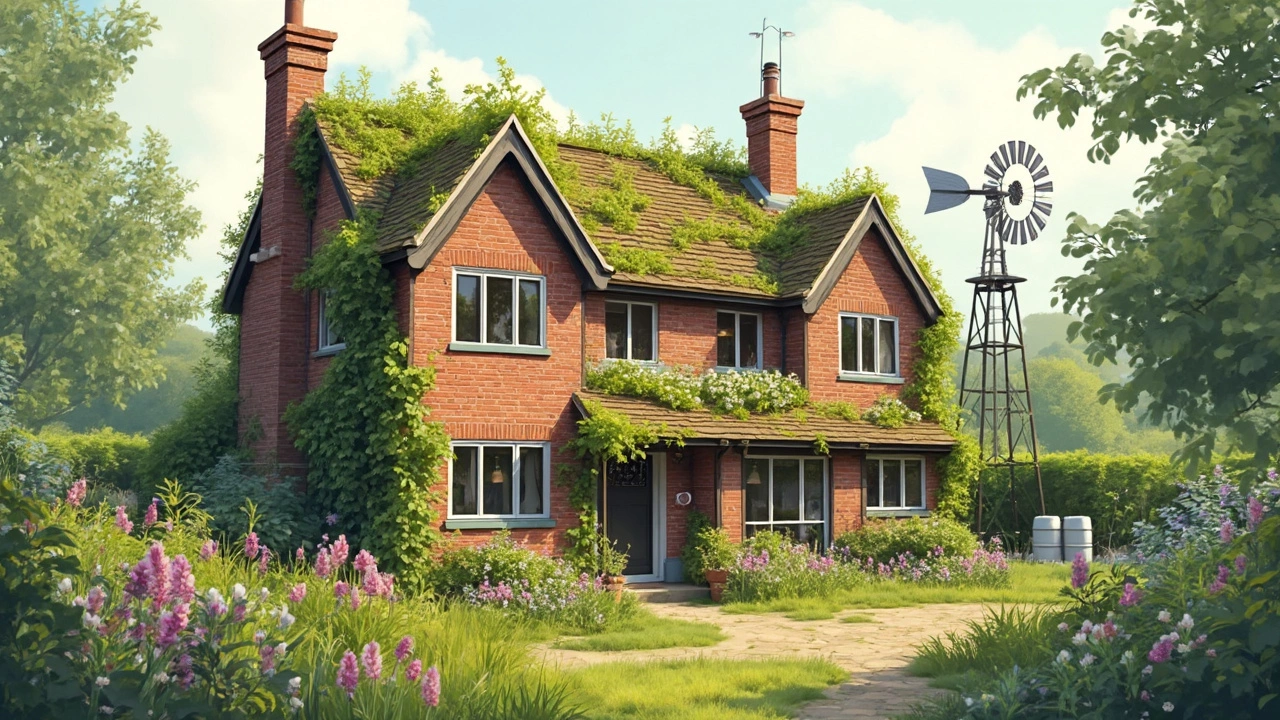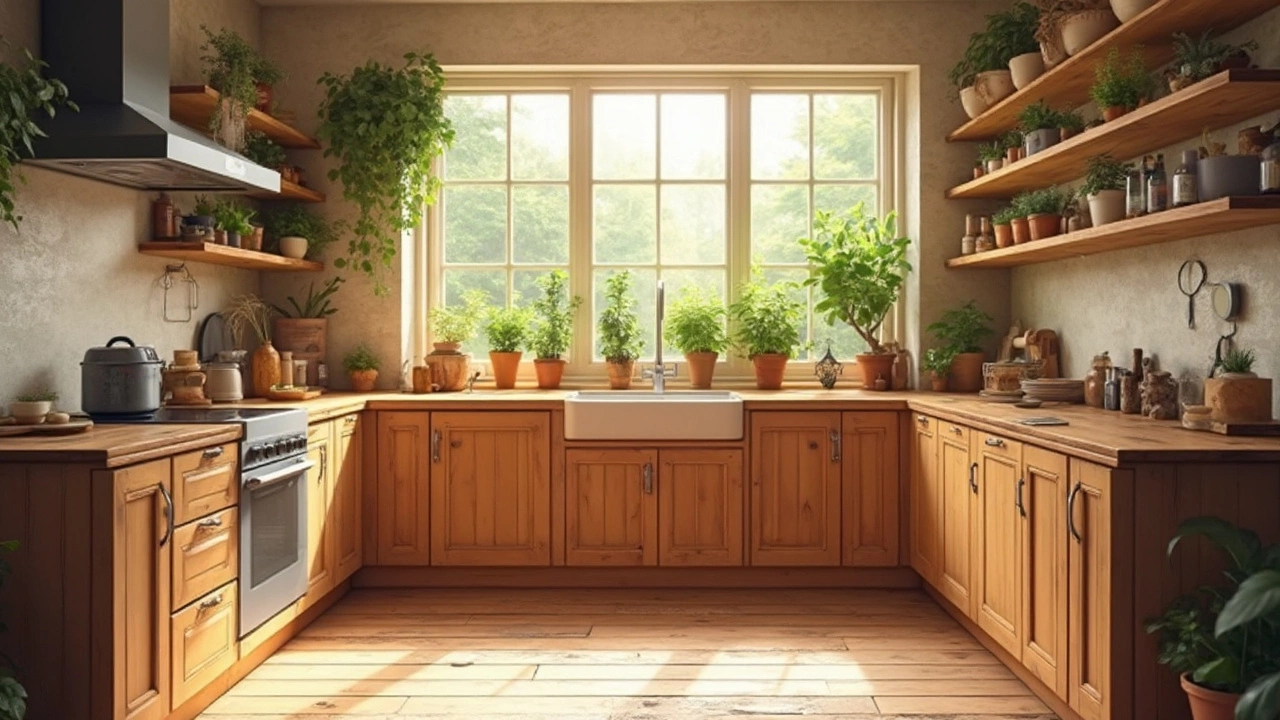Have you ever wondered what it truly means to have an eco-friendly home? It's not just about switching to LED bulbs or recycling—though that's part of it. The heart of an eco-friendly home lies in building and living sustainably. How does one achieve that? Let's break it down into manageable bits.
First off, the foundation is crucial. Choosing sustainable building materials is key. Think reclaimed wood, bamboo, or recycled metal. These not only lower the environmental impact but usually come with a unique aesthetic that sets your home apart.
Next, let’s talk about energy efficiency. This isn’t just about reducing bills—though that’s a nice perk. Investing in proper insulation, energy-efficient windows, and possibly even solar panels can make a big difference. Consider it your contribution to reducing the overall carbon footprint.
And how about bringing a bit of the outside in? Eco-friendly homes often incorporate elements of nature—be it through indoor plants, green roofs, or extensive use of natural light. This not only is good for the planet but also creates a calm, welcoming environment.
- Understanding Eco-Friendly Living
- Building Materials and Designs
- Energy Efficiency and Savings
- Incorporating Nature
- Renewable Energy Solutions
- Sustainable Lifestyle Tips
Understanding Eco-Friendly Living
Going green starts with understanding what eco-friendly homes really mean. At its core, it's about creating a living space that minimizes harm to the environment and promotes sustainability. But what does that look like in practice? Let's break it down.
Defining Eco-Friendly
Eco-friendly living isn't a one-size-fits-all concept. It's about making daily choices that are better for the planet. This means using fewer resources, reducing waste, and opting for solutions that don't deplete the planet's natural wealth. Simple things like using biodegradable cleaning products or composting your waste can make a big difference.
Why It Matters
The environmental benefits of choosing sustainable living are immense. Buildings account for almost 40% of global carbon emissions. Imagine cutting that number drastically by just being mindful about how homes are built and maintained. By adopting eco-friendly practices, you're not just saving on energy bills; you're investing in a healthier planet and a better future.
Key Features of Eco-Friendly Homes
What should you look for in a truly eco-friendly home? Here’s a quick guide:
- Utilization of green building materials like bamboo or recycled steel to lower the carbon footprint.
- Implementation of water-saving fixtures to reduce consumption.
- Maximized use of natural lighting to cut down on electricity use.
- Incorporation of energy-efficient appliances and systems.
Building an eco-friendly home can be a rewarding project, not just for the environmental benefits but for the sense of harmony it brings by living in sync with nature. Embracing green building practices isn't just a trend—it's a step toward a more sustainable future.
Building Materials and Designs
Building an eco-friendly home starts with the right materials. It's all about making smart choices that benefit both the environment and your home. The materials you use can significantly affect the sustainability and efficiency of your living space.
Eco-Conscious Materials
One popular choice is reclaimed wood. This material not only reduces the demand for new lumber but often comes with a story—each piece has its own history and character. Plus, it looks great and adds a rustic charm.
Bamboo is another sustainable option. It's one of the fastest-growing plants on earth, making it an excellent renewable resource. It's versatile too, used for flooring, countertops, and even walls. Not to mention, it’s stronger than many traditional wood options.
Recycled steel is on the rise in modern home design. It's strong, durable, and recyclable. Using steel can save an average of 75% in energy compared to producing new steel from raw materials. Think about that next time you're planning structural elements!
Insulation and Windows
Insulation is a big deal. A well-insulated home means less heating and cooling, saving energy and money. Consider eco-friendly materials like sheep's wool or cellulose, which is made from recycled paper. They’re effective and environmentally friendly.
Don't overlook windows. Installing energy-efficient windows, like those with a Low-E coating, helps regulate indoor temperatures. Add in insulated window frames, and you can prevent a lot of energy loss.
Innovative Designs
Building designs are shifting towards smaller, more efficient spaces. Smaller homes naturally mean less energy usage. And who really needs all that extra room anyway?
Open floor plans are trending. They allow for better airflow and light distribution, reducing the need for artificial lighting and cooling systems.
Ever heard of a living roof? These are becoming a hit in sustainable living. A roof covered with vegetation offers natural insulation, filters air pollutants, and looks stunning.
| Material | Renewability | Environmental Impact |
|---|---|---|
| Reclaimed Wood | High | Low |
| Bamboo | Very High | Very Low |
| Recycled Steel | Medium | Moderately Low |
So, when you're getting into eco-friendly building, remember that every choice counts—from the materials you choose to how you design your space. Keep it simple, functional, and sustainable.
Energy Efficiency and Savings
Making your home energy-efficient is a game-changer, not only for the planet but also for your wallet. So, where do we start? Let’s look at a few key areas that can make a big impact.
Insulation Matters
First up, insulation. It might not sound glamorous, but it's super important. Proper insulation is all about keeping your home temperature steady without overworking your HVAC system. Consider materials like cellulose or spray foam that seal the deal with energy-efficient results.
Smart Windows and Doors
Next, tackle your windows and doors. Drafty old windows are just money pits. Look into double-glazed windows—they're great at keeping the heat in during winter and out in the summer. As for doors, think about investing in quality, weather-stripped options to seal those pesky leaks.
Lighting and Appliances
Switching to LED lighting is a must. It's a staple in eco-friendly homes because LEDs use up to 90% less energy than traditional bulbs. Plus, they last ages. For appliances, keep an eye out for those with an ENERGY STAR rating. They typically use about 20-30% less energy than non-rated counterparts.
Heating and Cooling
Don’t overlook your heating and cooling systems. A smart thermostat can really help manage this, learning your schedule and optimizing your energy use. And if you're up for it, consider geothermal heating—it’s efficient and cuts down long-term costs.
| Feature | Energy Saving Potential |
|---|---|
| LED Lighting | Up to 90% less energy use |
| ENERGY STAR Appliances | 20-30% less energy |
| Geothermal Heating | Efficient and cost-effective |
Being mindful of these changes not only lowers your bills but also enhances your home’s sustainability. It's all about making savvy choices that lead to great energy savings and a happy planet.

Incorporating Nature
Bringing nature into your home isn’t just trendy; it's practical and beneficial for your well-being too. One exciting way to incorporate nature is through green roofs. These aren't just ordinary roofs; they're teeming with life. By adding vegetation to rooftops, you can improve air quality, reduce stormwater runoff, and even insulate your eco-friendly home. What’s not to love?
Another simple yet effective method is to introduce indoor plants. Whether it's a potted fern or a vertical garden wall, these greens can improve air quality and add a refreshing vibe to your interior. Plus, they’re known for boosting mood and productivity. Kind of an all-in-one deal, right?
Maximizing Natural Light
Nothing beats natural light for enhancing a home’s ambiance. To maximize it, consider installing large energy-efficient windows or even skylights. Not only does this reduce reliance on artificial lighting, but it also helps save on energy bills. Talk about a win-win!
Choosing Natural Materials
Opt for natural, sustainable materials within your home. Think wooden furniture, stone countertops, and wool rugs. These not only blend seamlessly into a natural theme but are often more eco-friendly and durable than synthetic alternatives.
Here’s a fun fact: did you know that more sunlight in your home can help regulate your body's natural sleep-wake cycle? It’s true! Exposure to natural light is essential, so keep those curtains open during the day.
Renewable Energy Solutions
Switching to renewable energy solutions is a giant leap towards making your home truly eco-friendly. It not only helps reduce your carbon footprint but can also save a good chunk of change on energy bills over time. But what are your options?
Solar Power
The most popular choice is solar power. Installing solar panels harnesses the energy of the sun to power your whole home. The initial cost might seem hefty, but with tax incentives and the potential to sell back surplus energy, it often pays for itself in a few years. Plus, there's nothing like the feeling of getting a lower electricity bill!
Wind Energy
If you've got a bit more space, or you're in a particularly windy area, small-scale wind turbines might be your cup of tea. While less common for city homes, they're an excellent option for those in rural or coastal areas. They can be used in conjunction with solar panels to cover all bases.
Geothermal Systems
Geothermal systems are fantastic for heating and cooling. They use the constant temperature of the earth to regulate your home's climate, making it super efficient. It's a bit more cost-intensive to install than other systems but can dramatically cut heating and cooling costs.
Hydroelectric Power
Got a stream or river running through your property? Installing a micro-hydroelectric generator is a possibility. It's even more niche but incredibly effective if you have the right conditions.
Biomass Systems
And let's not forget biomass systems, turning organic material into energy. While these are more common in larger setups, there's potential for residential use if you're willing to get creative!
To wrap it up, incorporating renewable energy can seem like a big commitment at first. But with varied options suitable for different living situations, it's worth exploring the possibilities for making your home greener and work for the environment, not against it.
Sustainable Lifestyle Tips
Wondering how to make your lifestyle more sustainable without a full home makeover? No worries, plenty of small changes can make a big impact over time. Embracing a sustainable lifestyle doesn’t require drastic measures; it’s all about making thoughtful choices. Here are some tips to get you started.
Reduce Energy Consumption
One of the quickest ways to embrace sustainable living is by reducing energy use. Try unplugging devices when not in use, and switch off lights as you leave a room. Installing a programmable thermostat can save both energy and money by optimizing heating and cooling when you're away or asleep.
Embrace Minimalism
Surrounding yourself with only what you need helps reduce waste dramatically. Before buying something new, ask yourself if it's truly necessary. Donate or recycle items you no longer use—one person's trash is another's treasure!
Choose Sustainable Transport
Consider walking, biking, or using public transportation whenever possible. It’s kinder to the planet and can sometimes be faster than being stuck in traffic. If you must drive, look into carpooling options or driving an electric vehicle if it's within your means.
Smart Food Choices
Eating seasonally and locally not only supports local farmers but also reduces the carbon footprint associated with transporting out-of-season produce. Opt for organic foods, and consider reducing meat intake to minimize environmental impact.
- Shop at local farmers' markets
- Plan meals to reduce food waste
- Compost food scraps
Water Conservation
Save water by fixing leaks immediately, taking shorter showers, and installing water-efficient fixtures. Every drop you save is a step toward sustainability.
Sustainable Shopping
Before making a purchase, think about the brand’s commitment to sustainability. Choose products made from recycled materials, or support companies known for ethical practices.
These are just a few ways you can transition to a green lifestyle. Every small change contributes to larger environmental benefits, and before you know it, you’ll have made a significant difference!
